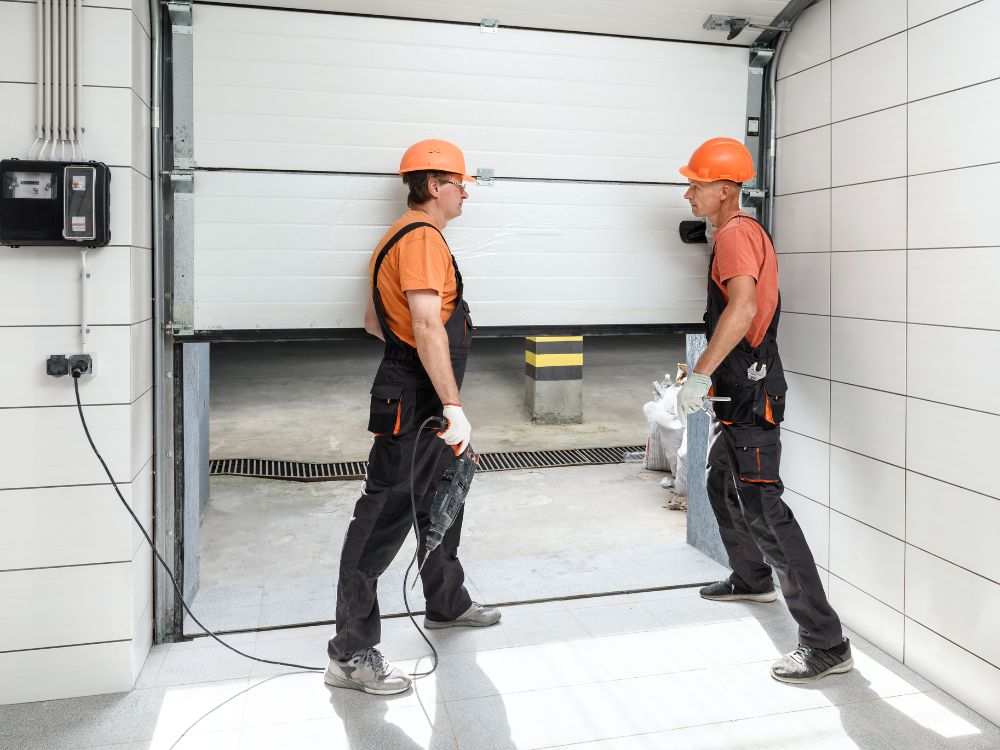Understanding Garage Door Replacement
Replacing a garage door can seem like a daunting task, but with proper planning and tools, it is manageable for those with some DIY experience. For others, hiring a professional might be the best choice.
Factors That Make Garage Door Replacement Challenging
- Size and Weight: Garage doors are large and heavy, requiring multiple people or special tools to handle safely.
- Technical Complexity: Installing tracks, springs, and openers requires precision and knowledge of mechanical systems.
- Safety Concerns: Torsion springs store significant tension and can be dangerous to adjust or install incorrectly.
- Customization: Unique garage sizes or designs may require custom doors or adjustments during installation.
- Tools and Equipment: Specialized tools, such as winding bars and impact drivers, are often needed for the job.
Steps for Replacing a Garage Door
1. Preparing for Replacement
Before starting the replacement process, gather all necessary tools and ensure the workspace is safe.
- Measure the Opening: Accurately measure the height, width, and depth of the garage door opening.
- Purchase the Door: Select a door that fits your garage’s dimensions and style preferences.
- Gather Tools: Have tools such as a drill, ladder, level, and wrenches ready.
- Ensure Safety: Wear gloves and safety glasses, and clear the area of obstacles.
2. Removing the Old Door
Carefully take down the old garage door to make space for the new one.
- Disconnect the Opener: Unplug and detach the garage door opener if applicable.
- Release Spring Tension: Safely release the tension in the springs using winding bars.
- Take Down Panels: Remove the door panels one by one, starting from the top.
- Remove Tracks: Unscrew and take down the old tracks and hardware.
3. Installing the New Door
Follow these steps to properly install the new garage door.
Setting Up the Tracks
- Assemble the Tracks: Connect the vertical and horizontal tracks according to the manufacturer’s instructions.
- Secure to the Frame: Attach the tracks to the garage frame using brackets and screws.
Installing the Door Panels
- Start at the Bottom: Position the bottom panel in the track and secure it with hinges.
- Add Additional Panels: Stack panels one by one, connecting them with hinges and screws.
- Check Alignment: Ensure all panels are level and fit properly within the tracks.
Setting Up the Springs and Opener
- Install the Springs: Attach torsion or extension springs carefully, following safety guidelines.
- Connect the Opener: Reconnect or install the garage door opener and test its operation.
- Test the Door: Open and close the door manually to ensure smooth operation before using the opener.
Preventative Tips for Garage Door Replacement
Taking precautions and planning ahead can make the process easier and safer.
Work with Assistance
- Enlist Help: Have at least one other person assist with lifting and installation.
- Follow Instructions: Carefully read and adhere to the manufacturer’s guidelines.
Invest in Professional Installation
- Hire Experts: If the job seems too complex, hire a professional to ensure proper and safe installation.
- Warranty Protection: Professional installations often come with warranties for added peace of mind.
Use Quality Materials
- Durable Components: Invest in a high-quality door and parts for better performance and longevity.
- Weatherproof Features: Look for doors with weather seals to prevent energy loss and protect against the elements.



